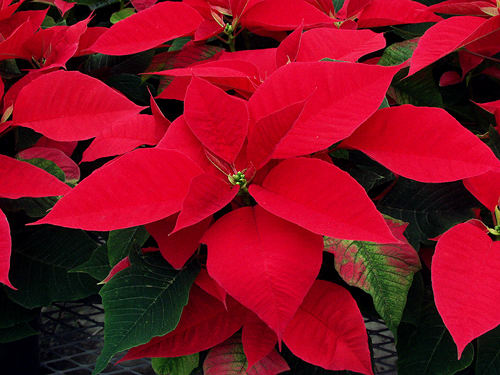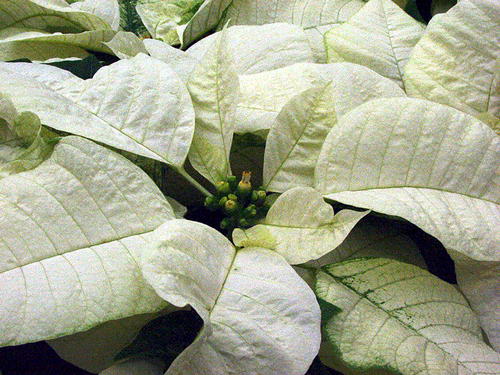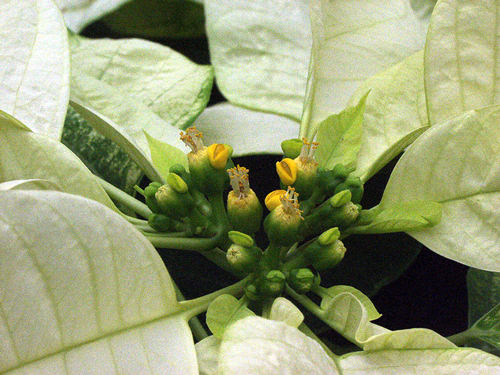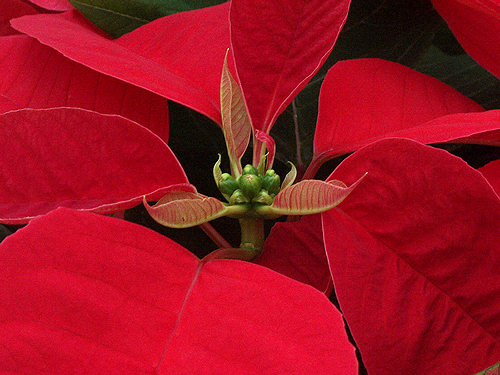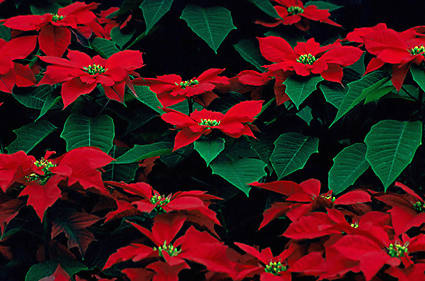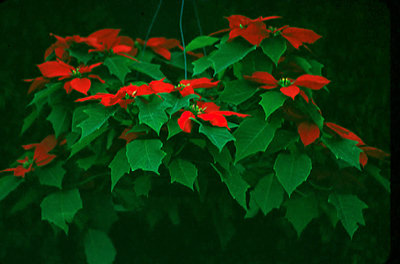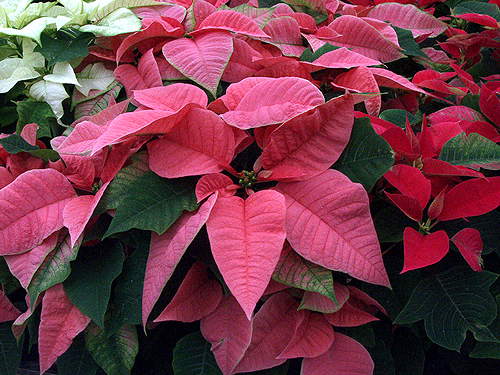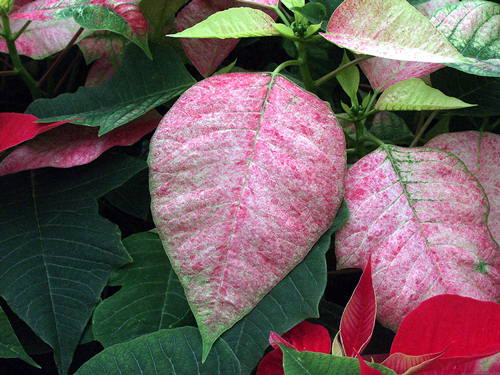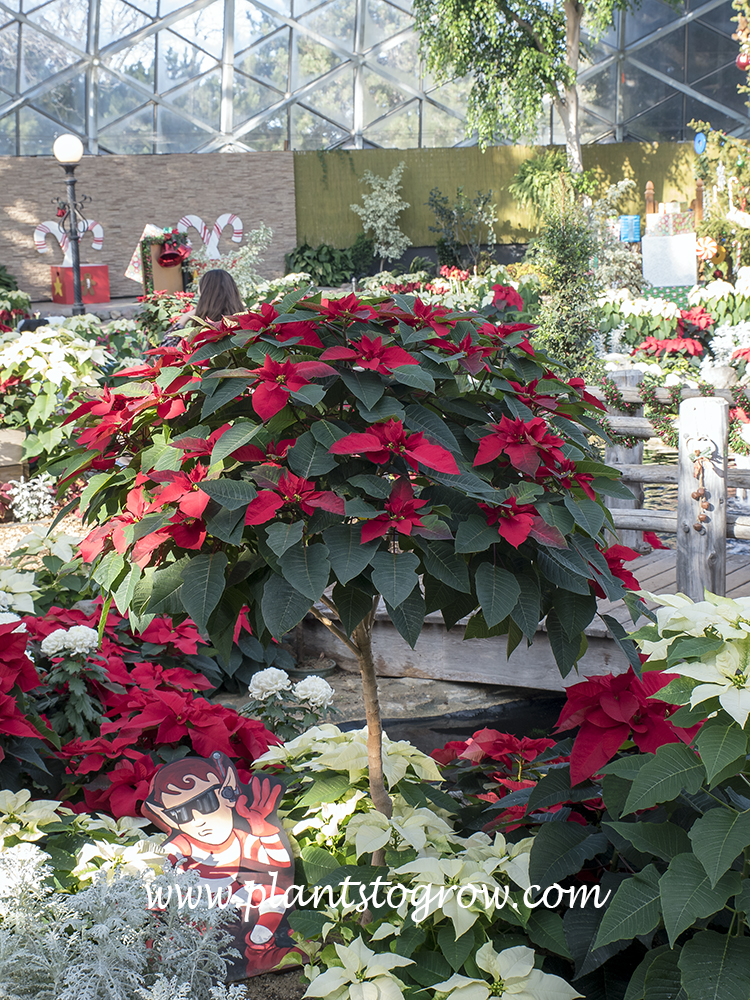| Description | Poinsettia are usually purchased as a holiday decoration and treated as a "throw away" plant. |
|---|---|
| Pronunciation | (POIN-seta) |
| Plant Type | All Plants, Indoor Flowering Plants |
| Sunlight | Putting the Poinsettia in a bright window will help to keep it healthy over a longer span of time, but this is not a requirement. They should survive the season just about anywhere, additional light just helps. Since your favorite spot for the plant may not have light, rotating the plant into a bright spot can help the plant last longer. |
| Moisture | One of the biggest killers of the Poinsettia is over watering. The plants should be kept on the dry side. Water only when the surface of the growing media is slightly dry. Don't let the plants stand in water. Water can accumulate in the foil or plastic that is wrapped around the pot. |
| Growing Media | The best growing media for these plants should be well drained. |
| Temperature | Normal house temperature will work for these plants. Avoid places like cold windows, by doors that are frequently opened, air registers, etc. One of the leading killers of this plant is the trip from the store to the car. Poinsettias will die or drop all of their green leaves if they are subjected to a blast of cold air. |
| Flowers | In strict botanical terms, a Poinsettia is not purchased for its flowers, but for its modified leaves called bracts. The actual flowers are located in the center of the bracts and they are small and knobby. The most popular color is red, but they also come in pink, white, Jingle Bells (red bracts with white spots), Monet (white with pink freckles), Peppermint (white with pink flecks), yellow, Marble (cream with pink) etc |
| Leaves | Green leaves, mostly entire with a red petiole. All parts of the plant will bleed a white sap if cut. |
| Propagation | Poinsettias are commercially produced from cuttings. They will not come true from seeds. |
| Misc Facts | The Poinsettia was brought to the United States in the 1820's by Joel Roberts Poinsett, the first United States Ambassador to Mexico. He found the plant growing next to a road, collected some cuttings and brought them back to his greenhouse in South Carolina. The first commercial production of this plant was in the early 1900s in California by the Ecke family. The Ecke Company is one of the largest producers of Poinsettia cuttings in the world. Many of the modern hybrids can trace their family back to the varieties introduced in the 1920's. |
| Author's Notes | Poinsettias are really tropical shrubs and can be kept growing all year. Most people set the plants outside during the summer where they will develop into large plants. If you want to get the plants to produce red bracts for the next Christmas season the following may work. 1. Grow outside during the summer 2. The plants should be pinched back 50% around mid August to early September. 3. They should be brought into the house when the outside temperatures start to become cool. 4. Grown in a bright window where the temperatures don't fall below 60 degrees. 5. From early September to mid October they should receive no more than 8 hours of light each day. 6. If everything works, by early November some of the bracts should start to show color 7. Plants should be feed on a regular base during the growing period with a fertilizer containing molybdenum......Good Luck!!!!! |

Cart
